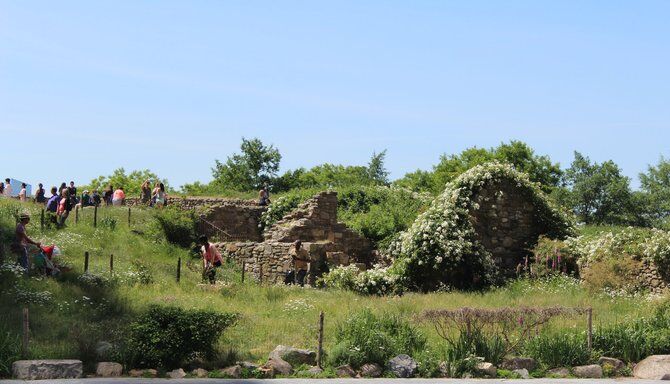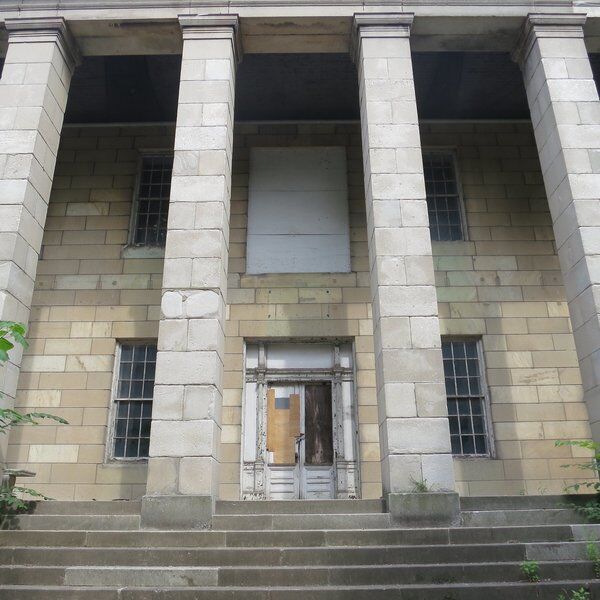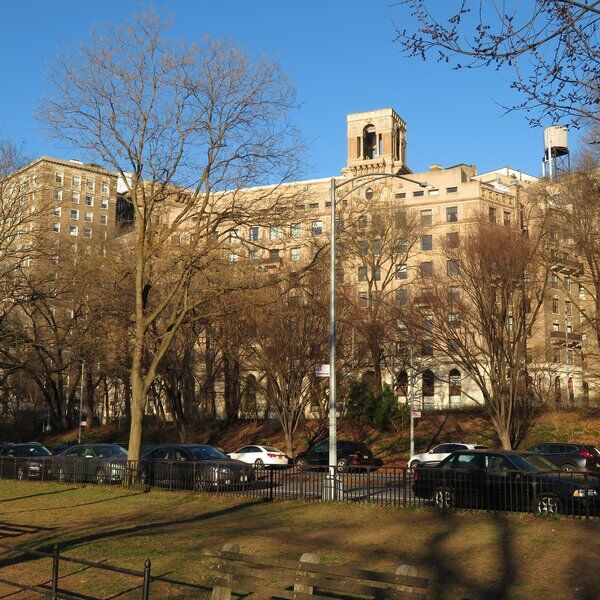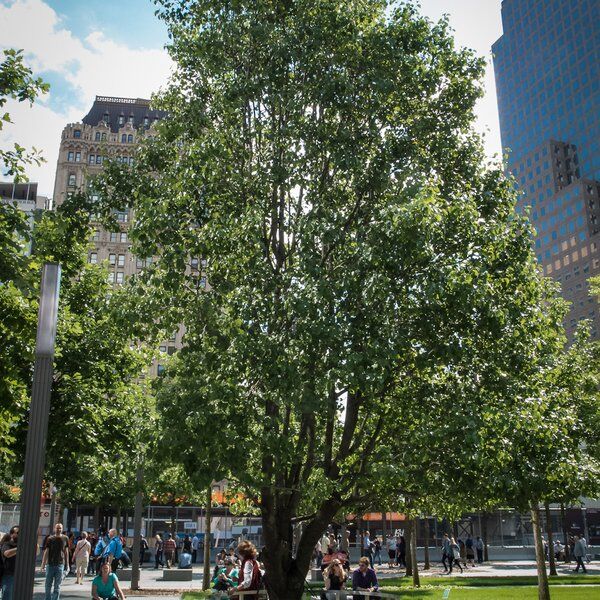Discover the Irish Hunger Memorial in NYC
The Irish Hunger Memorial, in Battery Park NYC, is a powerful tribute to the devastating Great Irish Famine (An Gorta Mór) of 1845-1852. Spanning half an acre, this unique and evocative memorial combines art, history, and nature to honor the past and raise awareness about ongoing global hunger crises. A visit to this memorial offers a striking contrast between the modern cityscape and the rustic, rural Irish landscape it recreates, allowing visitors to reflect on the devastation of famine.
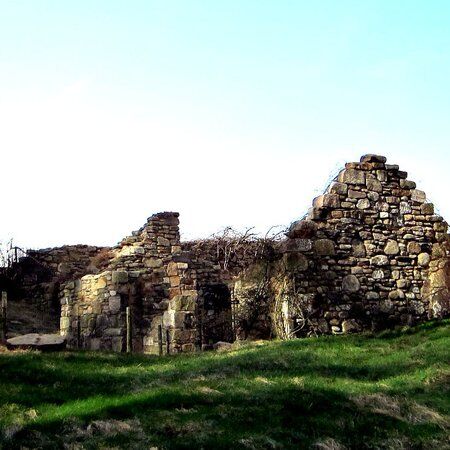
The Purpose of the Irish Hunger Memorial
The Irish Hunger Memorial was created with a clear purpose: to shed light on the events that led to the Great Irish Famine and to serve as a poignant reminder of the millions who lost their lives or were forced to flee their homeland.
The timing of the memorial’s opening, just months after 9/11, further deepened its resonance with the people of New York. With many Irish descendants among the first responders who lost their lives in the attacks, the memorial became a symbol not just of historical grief, but of shared sorrow and resilience.
Raising Awareness Beyond the Famine
Along the base of the memorial, bands of text and illuminated frosted glass panels display historical accounts of the Great Irish Famine while audio installations recount stories of hunger from around the world.
This juxtaposition emphasizes the memorial’s broader message: while it remembers the specific tragedy of the Irish Famine, it also serves as a reminder that hunger remains a persistent and pressing global issue.
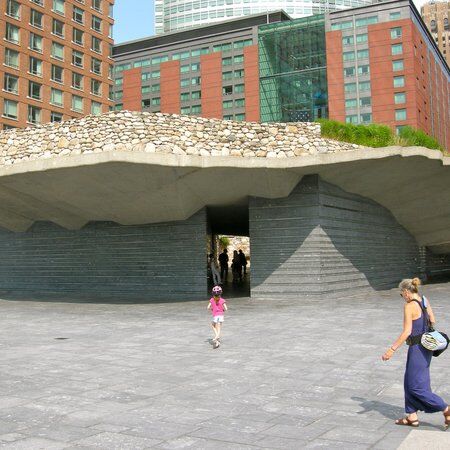
History of the Memorial: The Great Irish Famine
The Irish Hunger Memorial is connected to one of the most tragic events in Irish history, the Great Irish Famine (1845–1852).
But why is it positioned in NYC? Understanding the causes and impact of this event is crucial to appreciating the significance of the memorial and its place in New York City.
Overview of the Great Irish Famine
The Great Irish Famine, also known as the Potato Famine, was triggered by a series of devastating crop failures, most notably the potato blight. However, its causes were more deeply rooted in Ireland’s political and social structures.
In 1801, Ireland was incorporated into the United Kingdom through the Acts of Union, but power remained in the hands of a British-appointed executive. The Lord Lieutenant of Ireland and the Chief Secretary for Ireland controlled much of the country’s administration, with Irish representation in the British Parliament limited and often dominated by landowning elites.
Despite numerous government inquiries predicting disaster, Ireland's population continued to grow, living conditions deteriorated, and unemployment soared. A majority of Irish laborers struggled in extreme poverty, and their dependence on the potato as a primary food source left them vulnerable to famine. As a result, when the potato crop was devastated by blight in the mid-1840s, the effects were catastrophic, leading to mass starvation, disease, and death.
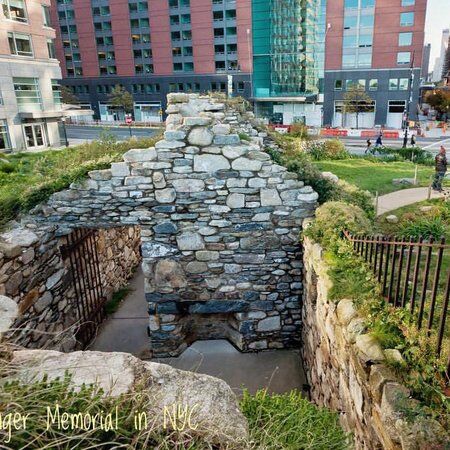
Irish Immigration to New York City
The Great Irish Famine forced approximately 1.3 million Irish people to flee their homeland, with New York City becoming a primary destination for those seeking refuge. However, while many famine immigrants arrived in the U.S. with very little, not all were completely impoverished.
Historian Tyler Anbinder’s research into records from the Emigrant Bank reveals that many Irish immigrants had saved enough to pay for their passage, as well as basic necessities upon arrival.
These records provide a deeper understanding of the resilience and determination of Irish immigrants. It shows that many of them were literate and highly skilled, quickly integrating into the American economy and shows them often becoming business owners and community leaders within a generation
Though they initially worked as unskilled laborers, Irish immigrants in New York City often improved their status over time. They formed tight-knit communities, supported by social networks that helped them secure better jobs and save money.
The health challenges faced by Irish immigrants were significant, with many succumbing to diseases like tuberculosis due to the overcrowded and unsanitary living conditions in tenements. Despite these hardships, the Irish made significant contributions to New York City.
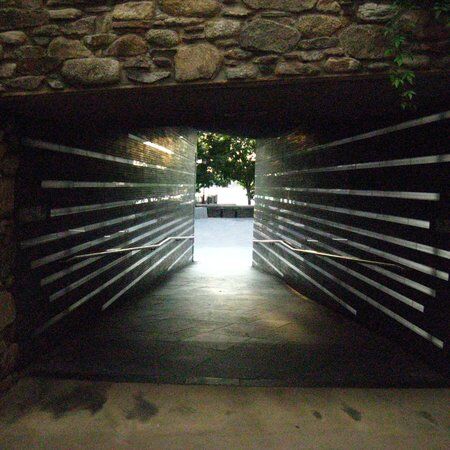
Features of the Irish Hunger Memorial
Designed by artist Brian Tolle in collaboration with landscape architect Gail Wittwer-Laird and 1100 Architect, the memorial was officially opened on July 16, 2002, after surviving construction interruptions caused by the tragic events of September 11, 2001.
Slack Cottage
At the heart of the memorial is an authentic 19th-century Irish stone cottage, transported from County Mayo, Ireland, and reconstructed on-site. Donated by the Slack family in memory of their ancestors who emigrated to America, the cottage is a powerful reminder of those left behind during the famine.
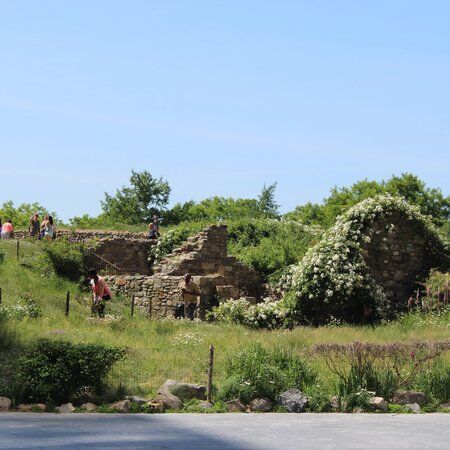
Irish Countryside
Surrounding the cottage is a landscape reminiscent of the Irish countryside, complete with native Irish flora such as blackthorn, foxglove, and heather. The memorial’s design includes a winding path that takes visitors through this symbolic landscape and stones from all 32 counties of Ireland, connecting the memorial with the entirety of Ireland.
As visitors ascend the hill, they are led to an elevated viewpoint 25 feet above ground, offering breathtaking views of the Hudson River, the Statue of Liberty, and Ellis Island—iconic symbols of immigration and new beginnings for many Irish emigrants. This bluff also encourages reflection on the memorial’s peaceful green setting amid the towering industrial scenery of Manhattan.

Visiting the Irish Hunger Memorial
Nestled in Battery Park City, the Irish Hunger Memorial is open daily from 11:00 am to 6:30 pm, and is designed as a peaceful retreat in the busy city. Visitors can take self-guided tours using the Irish Hunger Memorial app that provides deeper insights into its features and historical context.
After visiting the memorial and paying your respects, why not explore other hidden gems in Battery Park, such as the Seaglass Carousel and the Skyscraper Museum.
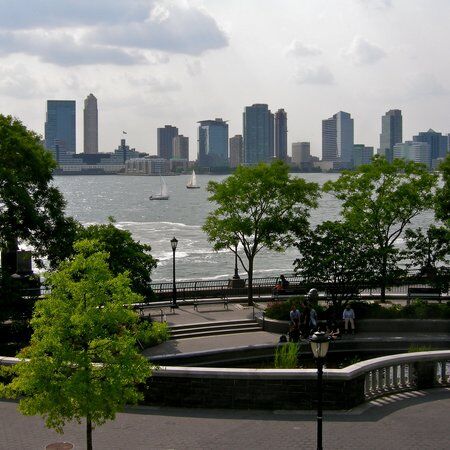
Go Beyond the Irish Hunger Memorial with CityDays
If you want to delve deeper into New York City's rich history and hidden gems, why not embark on a CityDays Scavenger Hunt? These scavenger hunts cover the history of their respective areas whilst un-covering incredible landmarks along the way, which we think you’ll enjoy!
Scavenger Hunt tours are a great way to bring family and friends—or even dates and colleagues—together for an afternoon of great fun and adventure, solving clues and snapping photos. Clues will lead you to the big sights and those that you'd walk straight past.
For more information about our New York Hunts then click here: NYC Scavenger & Treasure Hunts | CityDays.
